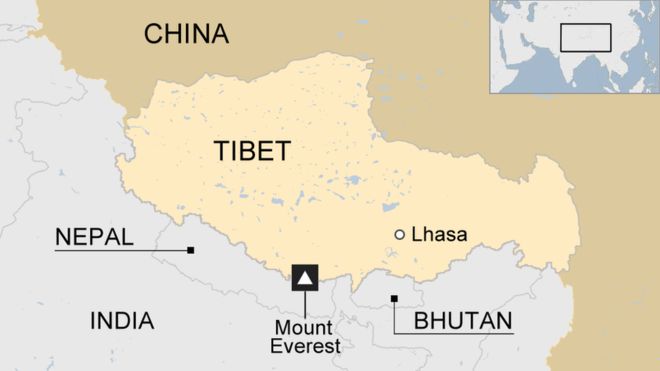Tibet Facts
- Tibet is a region covering much of the Tibetan Plateau, in Tibet Autonomous Region, China.
- It is the traditional homeland of the Tibetan people as well as some other ethnic groups such as Monpa, Tamang, Qiang, Sherpa, and Lhoba people and is now also inhabited by considerable numbers of Han Chinese and Hui people.
- The peaceful Buddhist country of Tibet was invaded by Communists China in 1949.
- Since that time, over 1.2 million out of 6 Tibetans have been killed, over 6000 monasteries’ have been destroyed, and thousands of Tibetans’ have been imprisoned.
- Tibet was voluntarily isolating themselves during the wars and was not part of the League of Nations.
- That’s why the rest of the world was quiet when China occupied the Tibetan territory and when it became with the name Xizang a province of China
- In 1950, the newly established Communist regime in China invaded Tibet, which was: rich in natural resources and had a strategically important border with India.
- The 14th Dalai Lama was a teenager when his country was invaded and was never able to govern Tibet independently.
- “Tibet today is one of the most repressed and closed societies in the world.
- Inside its borders and across the world, Tibetans have never stopped believing Tibet is a nation.
- After more than 60 years of occupation, Tibetans still resist China’s rule and defy its oppression.
- At the core of their divide is Tibet, an issue that fuels territorial disputes, border tensions and water feuds. Beijing says Tibet is a core issue for China. In truth, Tibet is the core issue in Beijing’s relations with countries like India, Nepal and Bhutan that traditionally did not have a common border with China
- Old Tibetan refers to the period of Tibetan language reflected in documents from the adoption of writing by the Tibetan Empire in the mid-7th century to works of the early 11th century
- In Tibet today, there is no freedom of speech, religion, or press and arbitrary dissidents continue.
- The Dalai Lama, Tibet’s political and spiritual leader, fled to India in 1959. He now lives among over 100,000 other Tibetan refugees and their government in exile.
- Forced abortion, sterilization of Tibetan women and the transfer of low income Chinese citizens threaten the survival of Tibet’s unique culture. In some Tibetan provinces, Chinese settlers outnumber Tibetans 7 to 1.
- Within China itself, massive human rights abuses continue. It is estimated that there up to twenty million Chinese citizens working in prison camps.
- Most of the Tibetan plateau lies above 14,000 feet. Tibet is the source of five of Asia’s greatest rivers, which over 2 billion people depend upon. Since 1959, the Chinese government estimates that they have removed over $54 billion worth of timber. Over 80% of their forests have been destroyed, and large amoutns nuclear and toxic waste have been disposed of in Tibet.
- Despite these facts and figures, the US government and US corporations continue to support China economically. This shows their blatant lack of respect for these critical issues of political and religious freedom and human rights.
- Tibet’s historical territory would make it the world’s 10th largest nation. Today it is under China’s occupation and has been divided up, renamed and incorporated into Chinese provinces.
Working for the Tibetan Right to Self-Determination

